




Jessie Jacob built a tiny habit in a big way using a variety of meditation tools. Learn how she did it, the tools she’s tried, and how she sets herself up for success.
Written by Jessie Jacob
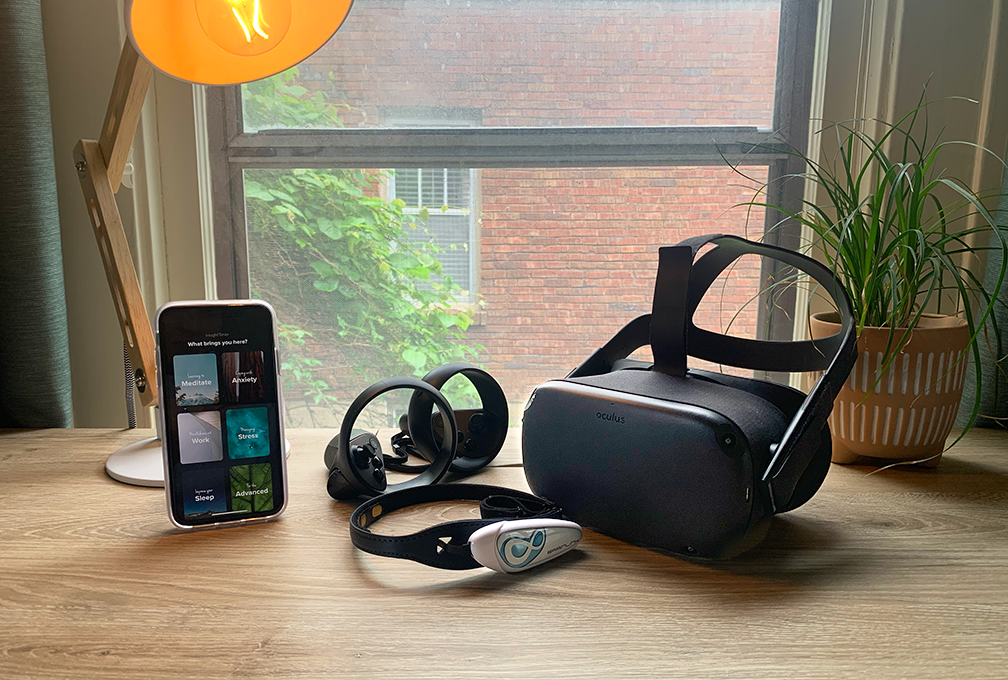
Are you a believer in the science and benefits of meditation? Have you tried meditating, but you just can’t get the habit to stick?
I initially got into mediation because I thought it would help me perform better at work, in the gym, and improve my overall life. All the people I deemed incredibly “successful” were doing it and there’s tons of science about the benefits of meditating every day.
I also knew it would help me feel less stressed. I shared more in my previous post about the lessons I learned through my meditation journey, How a 365 Day Meditation Streak Saved My Life and Four Lessons I’ve Learned, When I started out, I would go through waves with my meditation practice. I would meditate for a few days or weeks, and then I would forget about it or even avoid it. It just wasn’t sticking with me, but eventually, things clicked for me (don’t worry—I’ll explain how below!) and I was able to achieve a 365-day meditation streak. I’m currently at a 500-day streak.
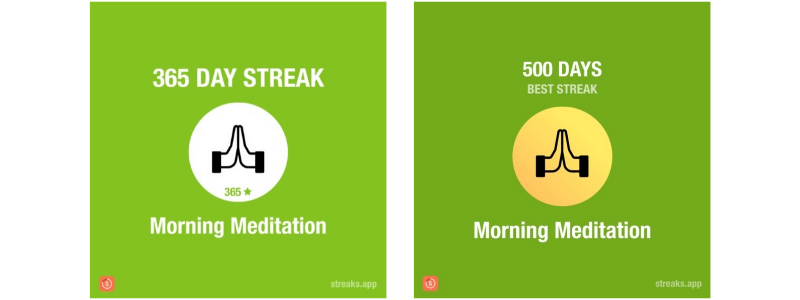
Things didn’t click until I learned from BJ Fogg, author of the book Tiny Habits and Director of the Behavior Design Lab at Stanford University, that not only can building any habit be challenging but building a daily meditation practice is one of the hardest habits to form. On the Professional AF podcast, Fogg explains why it’s so hard to form this habit which gave me greater compassion for why I had failed so many times:
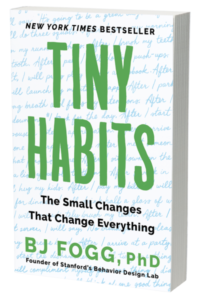
“Daily meditation is one of the hardest habits for people to form. When you are forming a new habit, if you feel successful as you do it, the habit will wire in. Most of the time when we are meditating, we’re not feeling successful. We are feeling like ‘I am just sitting here. I am just recognizing how busy my mind is. I am not feeling successful at all.’ So that combined with other factors in our life (how busy we are and is there even a quiet space) it really makes it a challenging habit.”
He goes on to explain how to form this habit and the power of the “Tiny Habit.” This is where it all clicked for me and perhaps will click for you, too!
One of the first steps when starting a new habit is to ask yourself “what is the outcome I want from this habit or the aspiration? And what are the other habits I may be able to form that could give me the same result?” The point here is to find something that may be even more enjoyable for you right now. Come up with other behaviors that give you the same outcome and you may find something is easier for you to do or something you are more motivated to do. For instance, if you want to create a daily meditation practice, maybe being in nature, gardening, or playing an instrument will actually get you the same outcome you are seeking. If it’s meditation you still want, then go for it!
A “Tiny Habit” is a behavior you do at least once a day that takes you less than 30 seconds and requires little effort. Do something that’s so small that you’ll be able to do it all the time.
“Take the aspiration of meditating for 20 minutes or 30 minutes and make it really, really tiny. Make it so tiny that it’s just almost ridiculously easy. It might be that you take three calming breaths rather than spending 30 minutes meditating,” Fogg says.
This is where the lightbulb went off for me. I was trying so hard to find 10, 20, or 30 minutes every day to meditate and if I didn’t, then it was upsetting. BJ Fogg advises you to do your tiny habit and chalk that up as a win! If you do more, great, but just doing the minimum is the goal.
Once the habit is scaled back to be really tiny, look for where you can fit this naturally into your existing routine. Where can this habit fit in before or after an existing behavior? Could it be right when you wake up? Could it be right before you make breakfast? Could it be after you drop the kids off at school?
It can be hard to find where it fits because every day is different. Test it out and see if it works. Once you find where it fits best, then you’ll have what Fogg calls a tiny habit recipe.
The recipe is to go to the same place at the same time every day and complete your tiny habit. For instance, if you want to meditate every day, start by sitting in the same chair at the same time every day. From there, start building. Sit in the chair daily and take a few breaths. If you have the time to do more, great! By all means, carry on. If you don’t, that’s okay too. You made it to the chair, did your tiny habit and that’s a win!
This is exactly how I built my meditation habit. Some mornings I would get out of bed, go sit in the same spot on my couch, and take three deep mindful breaths. If I had time for more, I would sit for longer. If not, then those three breaths were my meditation practice for the day.
BJ Fogg doesn’t recommend this part, but something that worked for me was to create a streak using the Streak app. It’s a simple way to track the completion of your habits. The days I only take three breaths or accomplish my other tiny habits (i.e. physical therapy, evening journaling), I count that as a win and mark it as completed to add to my streak.
If the streaks app isn’t your thing, there’s always the Seinfeld Strategy. During an interview, Jerry Seinfeld said the best way to become a better comic was to create better jokes and the way to create better jokes was to write every day. He created a simple system to hold himself accountable and motivated him to write daily.
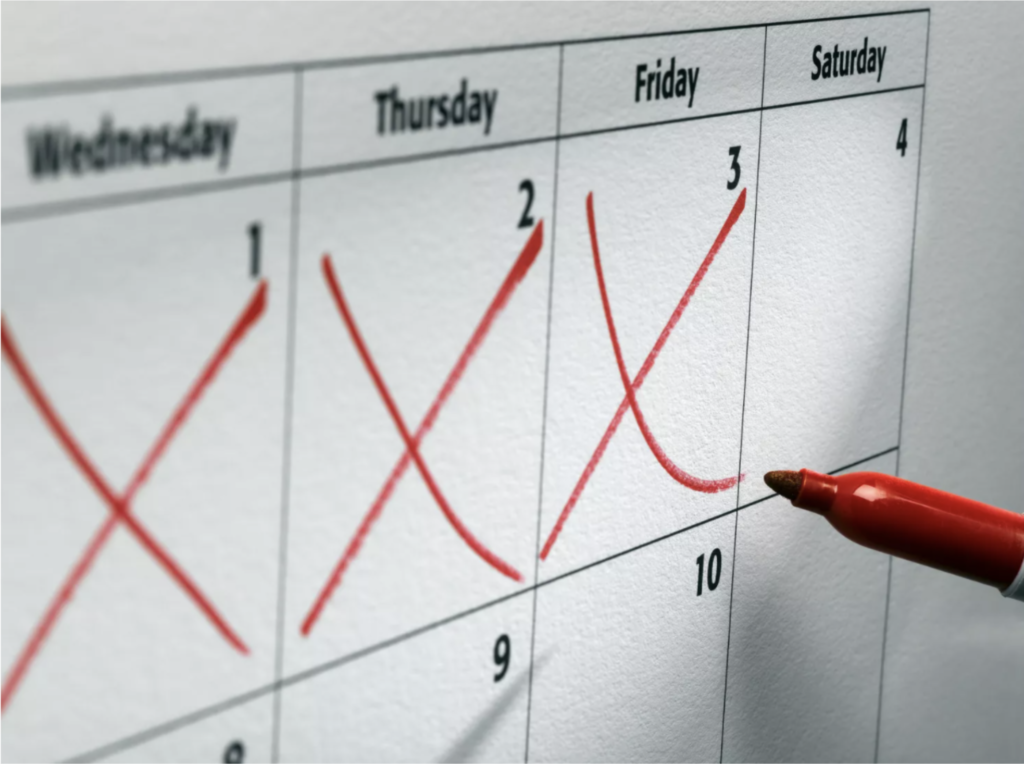
Here’s a little from the interview:
He told me to get a big wall calendar that has a whole year on one page and hang it on a prominent wall. The next step was to get a big red magic marker.
He said for each day that I do my task of writing, I get to put a big red X over that day. “After a few days you’ll have a chain. Just keep at it and the chain will grow longer every day. You’ll like seeing that chain, especially when you get a few weeks under your belt. Your only job next is to not break the chain.
“Don’t break the chain,” he said again for emphasis.
If you apply the Seinfeld Strategy to a meditation practice, cross off each had that you successfully complete your tiny habit price. If you miss a day, count how many days in a row you had before you missed and make breathing this streak your new goal.
Whether it’s the Streaks app or the Seinfeld Strategy, it’s all about tracking your progress in a simple and concrete way to build a lasting habit.
I prefer the Streaks app because it will send you a push notification when you haven’t completed your task for the day which is a helpful reminder. There are times when I have missed my morning meditation and in that case, I find time later in the afternoon or at night just before bed. There’s a great tweet I discovered from reading The Almanack of Naval Ravikant – A guide to wealth and happiness written by Eric Jorgenson. I too have grown to love a meditation session before bed.
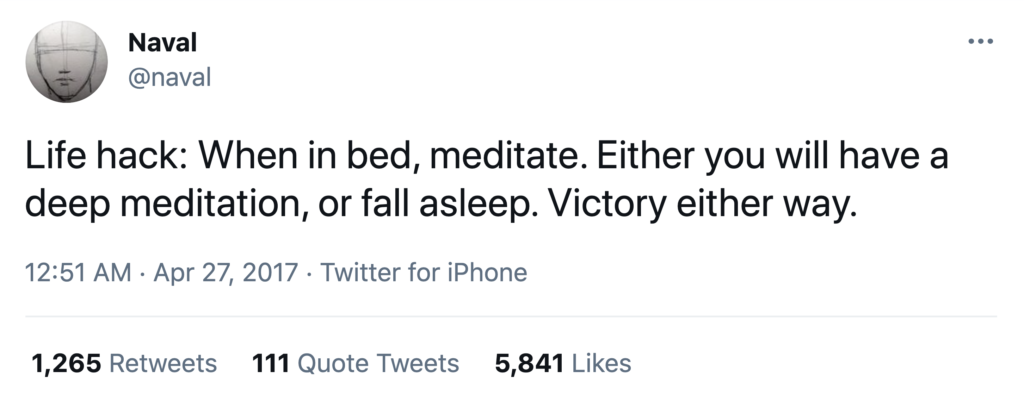
There are a plethora of meditation or mindfulness tools out there. There are different types of meditation (breathing, transcendental meditation, body scanning, mantra, etc.) to experiment with as well. Try out new tools and methodologies and see what works best for you. Here are some tools that I have used or am currently using:
Headspace – guided meditation app
-This is where I started my meditation journey and a great place for anyone starting.
Brain.FM – functional music to improve your focus
-I use this app to help me focus for work time and it’s also a great way to decompress.
Insight Timer – meditation app for sleep, stress, and anxiety
-This is my favorite meditation app which I use almost daily. There’s a little bit of everything to choose from, whether it’s an unguided meditation timer, guided meditations, music, or courses.
Here are some of the courses I have completed:
Coming Home to Yourself – Sarah Blondin
-I come back to this one probably every quarter.
iRest Yoga Nidra: Resilience for Everyday Stress – Richard Miller
Shift From A Scarcity To An Abundance Mindset – Sah D’Simone
30-Day Challenge To Awaken Your Inner Fire – Wim Hof
-This teacher is also known as the Iceman for his ability to withstand freezing temperatures. He set the Guinness World Records for swimming under ice and prolonged full-body contact with ice. He also previously held the record for running a half marathon barefoot on ice and snow.
21 Days of Morning Gratitude – David Gandelman
Learn To Stop Caring What Others Think – Lou Redmond
Creating A Safe World From Within – Emily Toner
10 Strategies For Living In Flow – Cara Bradley
Waking up (Sam Harris) – a guide for understanding the mind through meditation for the purpose of living a more balanced and fulfilling life
-I have only used the free version and there were some educational resources here.
Sensory Deprivation Tanks – isolation tank or flotation tank, is used for restricted environmental stimulation therapy (REST)
-They have these in a lot of major cities and it’s a great way to spend an hour or more.
Healium – virtual and augmented reality for human performance
-This is a completely new way to meditate for me and a great way to mix up my routine! There are so many incredible experiences to choose from that make my meditation practice so much more fun and engaging. There’s also a quiz you can take to find the kinds of meditations that may work well for you.
Now that I know the basics, I like to try new techniques and explore different facilitators.
At times, I like to gamify my meditation practice. Maybe that’s just the type A person in me. I like to see my streak because it keeps me going. I like to see how many hours I’ve meditated. On Insight Timer alone, I have meditated for 16,100 minutes. Who knows how many hours I have meditated with the other meditation apps or with even YouTube. I wish I could know how many hours total just for the fun of it even though none of that really matters. Healium gives me a score for each session and I can track it in my data dashboard to see how I’ve progressed over time.
I am at a point where not only do I like to try new things, but in the mornings I’ll ask myself “what do I need or want right now?” It’s like picking out what movie you want to watch on Netflix. We all pick what we want based on how we anticipate we’ll feel. I do that when I pick which meditation to listen to or which tool to use. There are some that really wake me up and get me mentally tuned in for the day. There are some that really clear my mind and there are some that put me right to sleep. It didn’t use to be like this for me. I used to wake up and think there was a right way to meditate or there was a specific tool I needed to continue using to really get the results I wanted.
The truth is, there is no right or wrong way to meditate. There is no one perfect mindfulness app. There isn’t a type of meditation that is best. All the tools and types of meditation serve a purpose and can positively impact you. Things shift when you focus on forming the habit rather than which tools and types are the best. As I shared in my previous blog post, forming this daily meditation habit has dramatically changed my life for the better. The key is to start somewhere and be consistent, but don’t be afraid to explore.

Jessie Jacob is a culture consultant and innovation coach. She helps uncover blind spots and opportunities for companies to improve their product or service through interviewing their prospects, customers, and employees. She also helps founders and executives to be proactive rather than reactive with their teams and workplace cultures so they can effectively scale. Her work has touched early-stage startups with an innovative idea to established, Fortune 500 companies